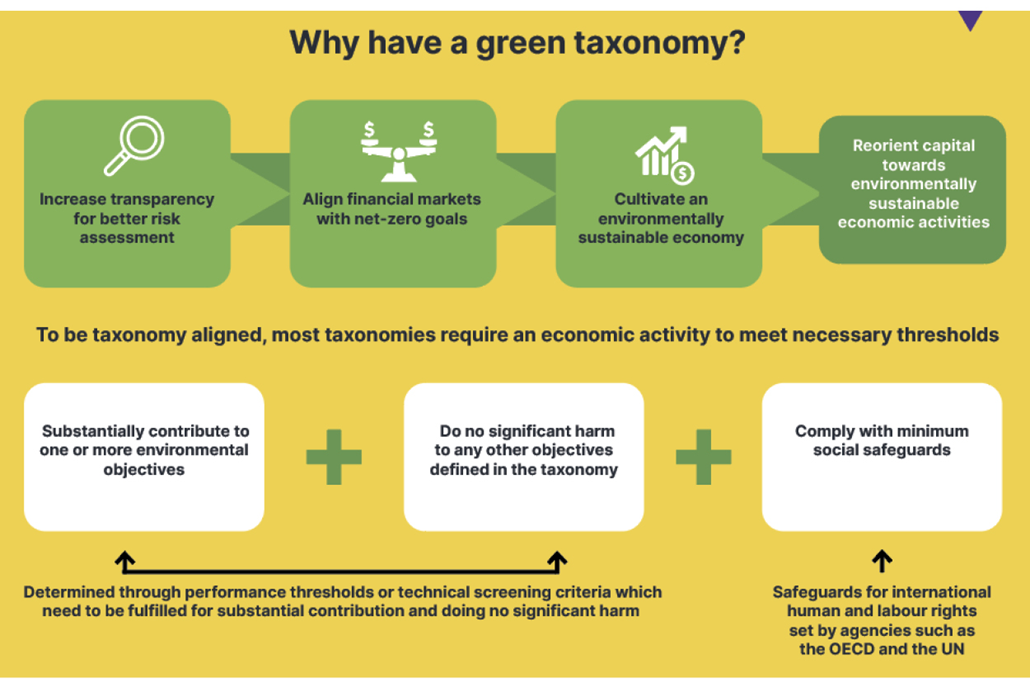- Courses
- GS Full Course 1 Year
- GS Full Course 2 Year
- GS Full Course 3 Year
- GS Full Course Till Selection
- MEP (Mains Enrichment Programme) Data, Facts
- Essay Target – 150+ Marks
- Online Program
- GS Recorded Course
- NCERT- First Ladder
- Polity
- Geography
- Economy
- Ancient, Medieval and Art & Culture AMAC
- Modern India, Post Independence & World History
- Environment
- Governance
- Science & Technology
- International Relations and Internal Security
- Disaster Management
- Ethics
- Current Affairs
- Indian Society and Social Issue
- CSAT
- 5 LAYERED ARJUNA Mentorship
- Public Administration Optional
- ABOUT US
- OUR TOPPERS
- TEST SERIES
- FREE STUDY MATERIAL
- VIDEOS
- CONTACT US
Green Taxonomy: A Framework for Sustainable Investments
Green Taxonomy: A Framework for Sustainable Investments

The concept of green taxonomy has gained significant attention in recent times, as it provides a framework for determining what makes an environmentally sustainable investment. By understanding its purpose and components, investors and businesses can make informed decisions and contribute to the green economy.
What is Green Taxonomy?
- A green taxonomy is a classification system that defines which economic activities and assets can be considered environmentally sustainable or "green."
- Green taxonomies aim to prevent greenwashing, allow investors to make informed decisions, and align investments with sustainable economic activities.
- Structurally, green taxonomies include goals such as climate mitigation and adaptation, biodiversity conservation, and social safeguards.
- To be considered green, an activity must contribute significantly to at least one environmental objective without causing significant harm to other environmental objectives.=
Green Taxonomy vs Greenwashing:
|
Feature |
Green Taxonomy |
Greenwashing |
|
Purpose |
Provides clarity on sustainable activities |
Misleads about environmental benefits |
|
Goal |
Channel investments towards green projects |
Attract consumers/investors without real change |
|
How it Works |
Establishes criteria for 'green' activities |
Uses vague terms, misleading imagery, cherry-picked data |
|
Benefits |
Informed investment decisions, incentivizes green practices, reduces greenwashing |
None, erodes trust, undermines genuine efforts |
|
Transparency |
Encourages clear reporting on environmental metrics |
Lacks transparency, difficult to verify claims |
|
Impact on Greenwashing |
Makes greenwashing harder |
Perpetuates environmental damag |
What is Greenwashing ?

- Greenwashing involves giving false beliefs or misleading information about how environmentally friendly a company's products are.
- Greenwashing misleads consumers into believing that a company's products have a greater positive impact on the environment, but in reality, the products do not have a positive impact on the environment.
- Products with vague terms like "natural," "eco-friendly," or "sustainable" without any verifiable certification or explanation.
Classic Examples:
- Fast Fashion "Conscious Collections": Brands such as H&M and Zara launch clothing lines advertised as environmentally friendly, often made with a small percentage of recycled materials. However, much of their production focuses on fast, cheap fashion with a heavy environmental impact.
- "Eco-friendly" Bottled Water: While bottled water companies may promote images of pristine nature, the production of plastic bottles and long-distance transportation contribute significantly to pollution and resource depletion.
- "Paper or Plastic?" at the Grocery Store: This choice gives a false sense of environmental action. Both single-use paper and plastic bags have environmental impacts, and the best option is reusable bags.
Specific Company Cases:
- Volkswagen Emissions Scandal: VW marketed their diesel vehicles as "clean diesel," while they had installed software specifically to cheat emissions tests.
- ExxonMobil: Despite public campaigns about their green initiatives, oil and gas companies like ExxonMobil have been accused of downplaying the role of fossil fuels in climate change and actively lobbying against climate-friendly policies.



